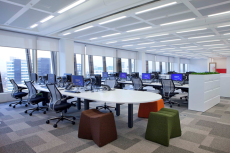June 13, 2013
Consultation opens on facilities management to ‘enhance organisational performance’
Facilities and property managers worldwide are being asked to help shape a ‘Strategic Facilities Management Guidance Note’. Once established, the note – spearheaded by a RICS-led working group – aims to help drive professionalism and enable benchmarking across the sector by creating greater consistency in the delivery of FM services. The guidance forms a key part of RICS’ wider campaign to improve understanding and recognition from businesses for the performance efficiencies that strategic FM can deliver. The call for global feedback follows RICS’ initial UK consultation last year which has resulted in the publication of the draft guidance, ‘Managing facilities to enhance organisational performance’.





























May 30, 2013
UK public sector leading the way in procurement and sustainable building
by Paul Statham • Comment, Facilities management, Public Sector, Technology
Nottingham City Council’s Loxley Building
Over the last few years, the UK Government has grown increasingly interested in finding ways of making its £30 billion property portfolio more efficient. Both the last Labour government and the current Coalition administration have been driven by the opportunities offered them with the advent of new technology, new ways of working and new procurement models. They’ve pursued these issues to cut costs by reducing and changing the way property is designed and managed but have also found how that can also help to establish best practice in sustainable building. What is increasingly apparent, especially given recent news from the Major Projects Authority about cost savings in procurement is that the public sector is now leading the way as models of good practice.
More →